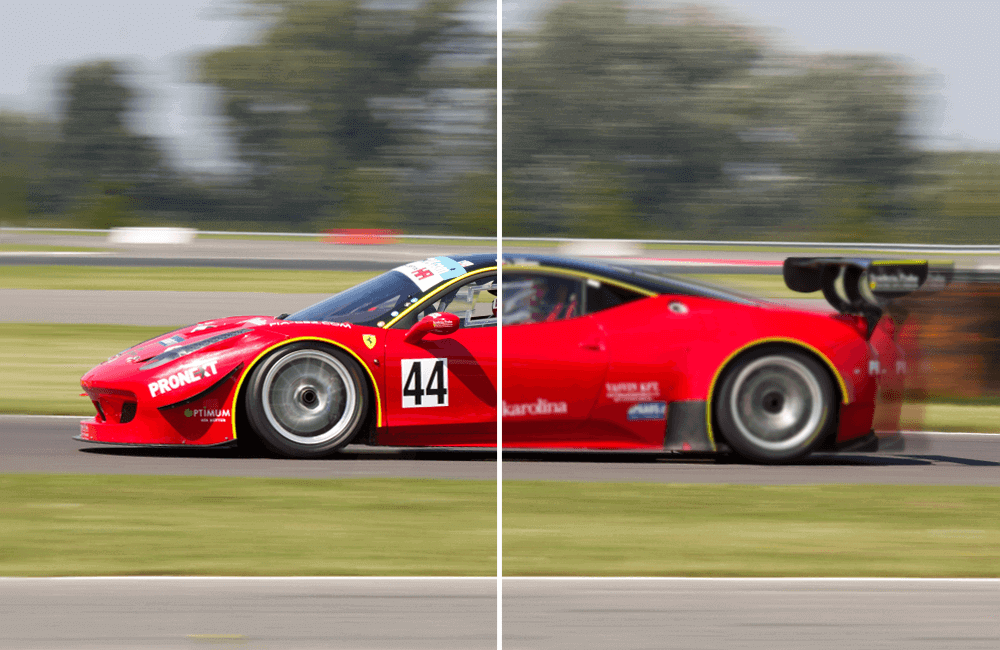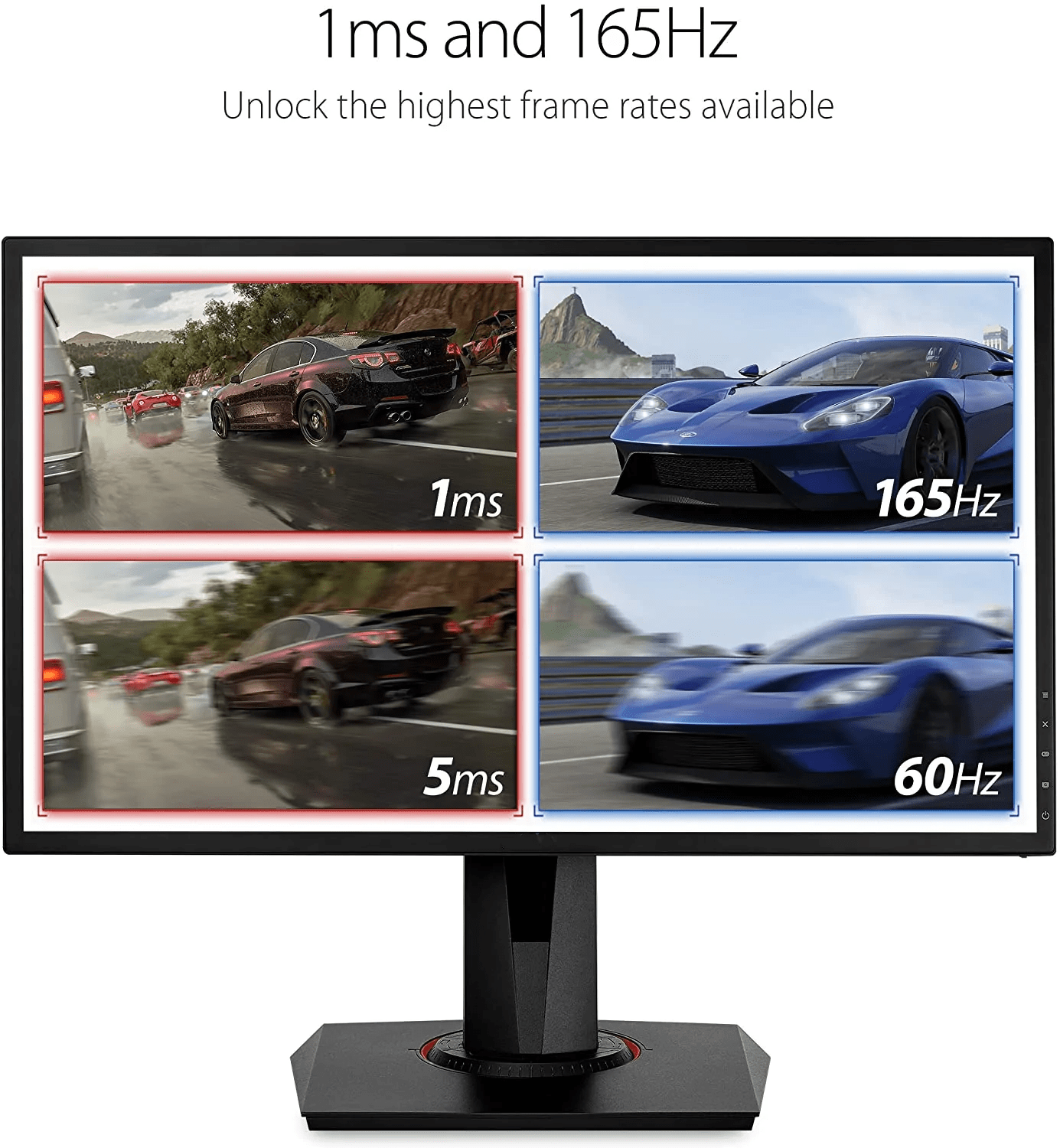The 1ms vs 5ms debate over monitor response time has been going on for years, with each side claiming their system is better. Well, now there’s an answer!
The new breed of fast LCD screens can offer odds that were never before available in this field – let me explain why you might want to take notice if your gaming future involves anything other than CRT TVs or regular computer monitors. A Gaming Monitor is an important thing for gamers.
The response rate or refresh frequency of your monitor is important for making sure that you are getting an accurate display.
The faster it changes information on screen- such as from one color (or shade) to another -the smoother gameplay will be since there won’t be any lag time between when something happens and how quickly those events show up!
You have a choice to make, and the way you answer this question could mean big things for your PC. Will it be faster with one or many cards in use?
What type of graphics processing unit do they employ- Greenland Ice Cap Edition or not-so-humble Joe Normal edition?
The options are endless when looking at laptops that offer high-performance levels without breaking down every few minutes because there’s too much demand on their parts!

1ms vs. 5ms: Which One is Faster?
The answer to this question is not as simple as it may seem. A lot of factors come into play when determining which monitor response time is better for gaming.
The two main types of LCD screens are TN (Twisted Nematic) and IPS (In-Plane Switching). TN panels are the most common and have faster response times than IPS panels. However, IPS panels offer better image quality and sound as most monitors have built-in speakers.
The term “response time” is used to describe how long it takes for a pixel to change from one color to another. A pixel is the smallest unit of a digital image that can be displayed on a screen.
The shorter the response time, the less lag there will be between when something happens and how quickly those events show up on your screen.
A 1ms response time means that each pixel can change color in 1 millisecond. A 5ms response time means that each pixel can change color in 5 milliseconds.
So, a 1ms response time is faster than a 5ms response times. However, the difference in speed is not always noticeable to the human eye.
It’s important to note that the response time is not the only factor that determines how smooth gameplay will be. Other factors such as frame rate and input lag also play a role in determining gaming performance.
The frame rate is the number of frames that are displayed on your screen per second. The higher the frame rate, the smoother gameplay will be. Most gamers aim for a frame rate of 60fps (frames per second).
Overall, a 1ms response time is faster than a 5ms response time. However, the difference in speed is not always noticeable to the human eye. The frame rate and input lag are also important factors to consider when determining gaming performance.
1ms vs 5ms: Which One Should You Choose?
The answer to this question depends on your personal preferences. Some gamers prefer the faster response time of a 1ms monitor, while others prefer the better image quality of a 5ms monitor.
It’s important to try out both types of monitors to see which one is right for you. Ultimately, the decision comes down to personal preference. Both are popular gaming monitors.
Do you want a monitor with a faster response time or one with the better image quality? Whichever you prefer, make sure to take the frame rate and input lag into consideration as well. Those are the two other important factors that will determine your gaming performance.
With a 1ms or 5 ms monitor, it’s important to note that the larger your screen size and higher the resolution of the device you’re using the slower the response time will be. This is because signals have a farther journey from main power sources as well processing centers where they need to go before being sent out onto our screens!

TN vs IPS – Panel Type
When it comes to 1ms or 5ms, there are two types of LCD screens: TN (Twisted Nematic) and IPS (In-Plane Switching). TN panels are the most common and have faster response times than IPS panels. However, IPS panels offer better image quality overall.
The shorter the response time, the less lag there will be between when something happens and how quickly those events show up on your screen.
A 1ms response time means that each pixel can change color in 1 millisecond. A 5ms response time means that each pixel can change color in 5 milliseconds.
So, a 1ms response time is faster than a 5ms response time. However, the difference in speed is not always noticeable to the human eye.
How Important is Your Monitor’s Response Time?
It’s important to note that the response time is not the only factor that determines how smooth gameplay will be. Other factors such as frame rate and input lag also play a role in determining gaming performance.
The frame rate is the number of frames that are displayed on your screen per second. The higher the frame rate, the smoother gameplay will be. Most gamers aim for a frame rate of 60fps (frames per second).
Input lag is the delay between when you input command and when it is executed on your screen. A lower input lag will result in quicker and more responsive gameplay.
Overall, a 1ms response time is faster than a 5ms response time. However, the difference in speed is not always noticeable to the human eye. The frame rate and input lag are also important factors to consider when determining gaming performance.
Conclusion
When it comes to 1ms vs 5ms, the answer depends on your personal preferences. Some gamers prefer the faster response time of a 1ms monitor, while others prefer the better image quality of a 5ms monitor.
Do you want a monitor with a faster response time or one with the better image quality?
Whichever you prefer, make sure to take the frame rate and input lag into consideration as well. Those are the two other important factors that will determine your gaming performance.
